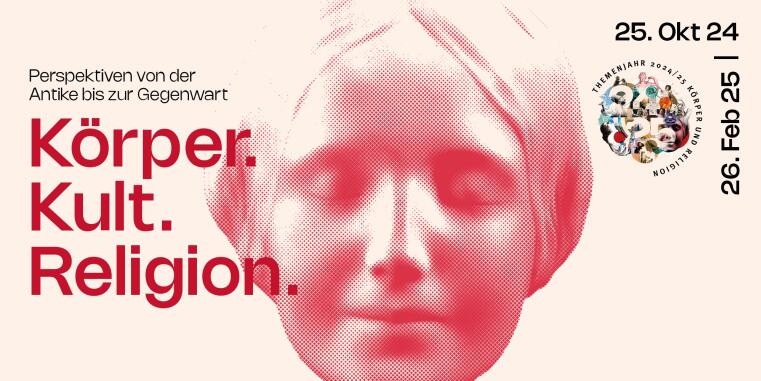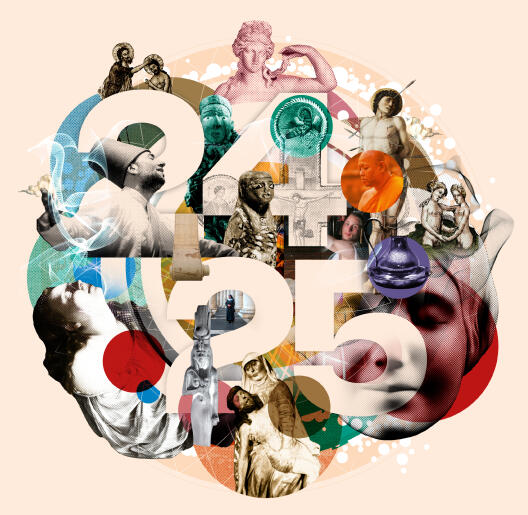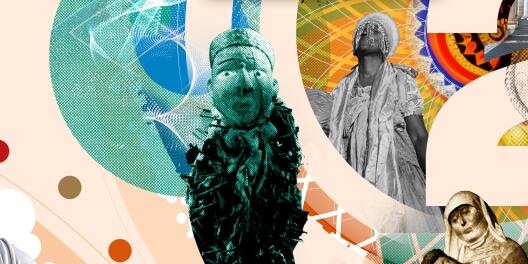
Body. Cult. Religion. Perspectives from antiquity to the present
Exhibition of the Cluster of Excellence “Religion and Politics” on the body in the religions of the world – at the Archaeological Museum and the Bible Museum of the University of Münster in 2024/2025
The body has always been part of the practices and ideas of religions across the world. This was shown in the exhibition “Body. Cult. Religion. Perspectives from antiquity to the present” organized by the Cluster of Excellence “Religion and Politics” at the University of Münster. The exhibition could be seen at the Archaeological Museum and the Bible Museum of the University of Münster from 25 October 2024 to 26 February 2025, and was part of the Cluster of Excellence’s interdisciplinary annual theme for 2024/25 on “Body and Religion”. Read more
Photos


Opening ceremony in the Fürstenberghaus© Exzellenzcluster „Religion und Politik“ / Paul Schneider 
Welcome address by Michael Quante, Vice-Rector for International Affairs, Transfer and Sustainability at the University of Münster© Exzellenzcluster „Religion und Politik“ / Paul Schneider 
Welcome address by Klaus Rosenau, Mayor of the City of Münster© Exzellenzcluster „Religion und Politik“ / Paul Schneider 
Numerous guests in lecture theatre F2 at the University of Münster© Exzellenzcluster „Religion und Politik“ / Paul Schneider 
Welcome address by Michael Seewald, spokesperson for the Cluster of Excellence "Religion and Politics"© Exzellenzcluster „Religion und Politik“ / Paul Schneider 
Angelika Lohwasser, Egyptologist and curator of the exhibition, presents the annual theme 2024/2025 "Body and Religion" at the Cluster of Excellence© Exzellenzcluster „Religion und Politik“ / Paul Schneider 
The two curators, Holger Strutwolf, director of the Bible Museum, and Achim Lichtenberger, director of the Archaeological Museum, provide an initial overview of the exhibition ‘Body. Cult. Religion.’© Exzellenzcluster „Religion und Politik“ / Paul Schneider 
Michael Quante, Michael Seewald, Angelika Lohwasser, Holger Strutwolf, Klaus Rosenau, Achim Lichtenberger© Exzellenzcluster „Religion und Politik“ / Paul Schneider 
A look at the exhibition ‘Body. Cult. Religion.’© Exzellenzcluster „Religion und Politik“ / Paul Schneider 
The exhibition has opened!© Exzellenzcluster „Religion und Politik“ / Paul Schneider 
The first visitors are being guided through the exhibition© Exzellenzcluster „Religion und Politik“ / Paul Schneider 
Visitors can take part in a survey that invites them to take a closer look at the themes of the exhibition© Exzellenzcluster „Religion und Politik“ / Paul Schneider 
Visitor looking at exhibits in the ‘Gender roles?’ themed area© Exzellenzcluster „Religion und Politik“ / Paul Schneider 
A media station shows an animated film about a study on religious clothing© Exzellenzcluster „Religion und Politik“ / Paul Schneider 
Nkisi-Nkonde, a so-called nail fetish from the Congo from the 19th/20th century, in the topic ‘Religion and Healing’© Exzellenzcluster „Religion und Politik“ / Paul Schneider 
Portrait of a doctor in the thematic area of ‘Religion and Healing’© Exzellenzcluster „Religion und Politik“ / Paul Schneider 
Achim Lichtenberger, director of the Archaeological Museum, gives insights into the exhibition© Exzellenzcluster „Religion und Politik“ / Paul Schneider 
Statuette of Shiva as an ascetic© Exzellenzcluster „Religion und Politik“ / Paul Schneider 
Photo series ‘Orthodox Eros’ by Lea Golda Holtermann© Exzellenzcluster „Religion und Politik“ / Paul Schneider 
View of a Buddhist altar in the ‘Divine Figures’ section© Exzellenzcluster „Religion und Politik“ / Paul Schneider 
Three further topics are exhibited in the Bible Museum© Exzellenzcluster „Religion und Politik“ / Paul Schneider










